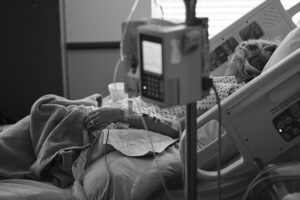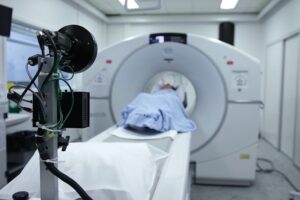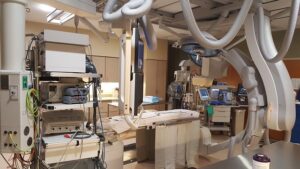ARDS Mortality Rate: How Early Detection and Treatment Can Help
ARDS Mortality Rate: How Early Detection and Treatment Can Help
Acute Respiratory Distress Syndrome (ARDS) is a serious medical condition characterized by rapid onset of widespread inflammation in the lungs. This condition can lead to severe respiratory failure and, unfortunately, has a significantly high mortality rate. The complexity of ARDS, coupled with the urgency of its onset, can create a sense of fear and uncertainty for both patients and their families. However, understanding ARDS—its causes, symptoms, treatment options, and the critical importance of early detection—can empower individuals and families facing this daunting diagnosis.
Research has shown that the mortality rate for ARDS can vary greatly, ranging from 27% to as high as 60%, influenced by various factors such as the underlying cause, the promptness of treatment, and the overall health of the patient. As a clear understanding of ARDS and its implications grows, so too does the potential for improving survival rates through early, effective interventions.
Understanding ARDS: Causes and Symptoms
ARDS can arise due to a variety of underlying conditions, including pneumonia, sepsis, trauma, and inhalation of harmful substances. The condition is essentially the result of a chain of inflammatory responses triggered in the lungs, which lead to increased permeability of the alveolar membrane, resulting in pulmonary edema and impaired gas exchange. Understanding the potential causes of ARDS is crucial for effective prevention and treatment.
The symptoms of ARDS often develop within hours to days after the initial injury or illness that precipitates the syndrome. Common symptoms include:
- Severe shortness of breath
- Ineffective or rapid breathing
- Low blood oxygen levels
- Coughing or wheezing
- Dizziness or confusion
It is essential for caregivers and healthcare professionals to be vigilant when monitoring at-risk patients. Recognizing these symptoms promptly can lead to faster diagnosis, thus increasing the likelihood of better outcomes.
The Importance of Early Detection
Early detection of ARDS is critical in improving survival rates. When ARDS is identified promptly, healthcare providers can initiate treatment strategies that target both the cause of the condition and the symptoms experienced by the patient. Familiarity with the symptoms and risk factors can lead to earlier intervention.
Risk factors for ARDS include:
- Age: Older adults have a higher risk
- Pre-existing lung disease: Conditions like COPD or asthma
- Obesity: Increases the risk of respiratory failure
- Sepsis: A common precipitant of ARDS
- Major trauma: Such as head injuries or severe accidents
Healthcare practitioners must maintain a high index of suspicion for ARDS in patients presenting with respiratory distress, especially in the context of known risk factors. Early diagnosis should ideally involve a combination of clinical evaluation, imaging (such as chest X-rays or CT scans), and laboratory tests measuring blood gases.
Treatment Options for ARDS
The treatment of ARDS focuses primarily on providing supportive care while addressing any underlying conditions that may have contributed to its development. Key strategies include:
- Mechanical Ventilation: Patients with ARDS often require assistance with breathing. Mechanical ventilation helps to ensure adequate oxygenation and removal of carbon dioxide. Strategies, such as low tidal volume ventilation, can protect lung tissue from further injury.
- Fluid Management: Balancing fluid levels is crucial. Excessive fluid can heighten pulmonary edema, aggravating the condition, while inadequate fluid can hinder circulation.
- Medications: Corticosteroids are commonly utilized to reduce inflammation and manage the body’s immune response. Other agents, such as sedatives and neuromuscular blockers, may also be used to improve ventilation.
- Extracorporeal Membrane Oxygenation (ECMO): In severe cases, ECMO might be necessary to support patients by oxygenating blood outside the body, allowing the lungs time to heal.
Each of these interventions requires close monitoring and should be tailored to each patient’s unique needs. The multidisciplinary care team—comprised of respiratory therapists, critical care physicians, nurses, and dietitians—plays a crucial role in optimizing treatment plans.
Prognostic Factors Influencing ARDS Outcomes
Understanding various prognostic factors can aid healthcare providers and families in navigating treatment options and expectations. Several factors have been identified that influence ARDS outcomes, including:
- The severity of the initial lung injury
- The presence of co-morbidities, such as heart disease or diabetes
- Patients’ responses to initial treatment and the timeline of intervention
- Age and overall health status
- The cause of ARDS, whether pneumonia, trauma, or sepsis
Studies have demonstrated that patients with moderate to severe ARDS face a higher risk of long-term complications, including reduced lung function and psychological effects such as anxiety and depression. This highlights the need for comprehensive follow-up and support services post-recovery.
Long-term Consequences and Rehabilitation
Survivors of ARDS may confront a myriad of challenges beyond the acute phase of the illness. Many report ongoing difficulties such as:
- Reduced physical capacity, including persistent breathlessness
- Cognitive impairments, including memory and attention deficits
- Emotional challenges, including post-traumatic stress disorder (PTSD)
Rehabilitation strategies must be considered an integral aspect of recovery. Pulmonary rehabilitation programs often result in significant improvements in functional status, quality of life, and exercise tolerance. In addition, mental health support should be offered to aid in coping with the psychological impact of the illness.
FAQs about ARDS
What is the primary cause of ARDS?
ARDS is primarily triggered by a variety of insults to the lung, such as pneumonia, sepsis, trauma, and inhalation of harmful substances. It results from damage to the alveoli, leading to fluid accumulation and impaired gas exchange.
How is ARDS diagnosed?
ARDS is diagnosed through a combination of clinical evaluation of symptoms, imaging studies (like chest X-rays), and laboratory tests measuring oxygen levels in the blood. It often requires the exclusion of other possible causes of the patient’s symptoms.
What is the prognosis for ARDS survivors?
The prognosis for ARDS survivors can vary greatly based on multiple factors such as age, health prior to ARDS, and the cause and severity of the syndrome. While many patients recover fully, some may experience long-term complications affecting physical and emotional health.
Is there a cure for ARDS?
While there is no direct cure for ARDS, effective treatment can significantly improve outcomes and survival rates. Focused interventions, supportive care, and rehabilitation play vital roles in managing this syndrome.
Can ARDS be prevented?
Preventing the conditions that lead to ARDS—such as effective management of pneumonia, sepsis, and trauma—can reduce the risk. For patients with pre-existing respiratory conditions, careful monitoring and proactive management are essential.
Conclusion
Acute Respiratory Distress Syndrome, while daunting, is a condition that can be managed more effectively through early detection, timely interventions, and a robust supportive care approach. Understanding the symptoms, risk factors, and treatment options is imperative for patients and families facing this severe illness. The healthcare community continues to evolve in its approach to ARDS, with ongoing research aimed at improving outcomes and reducing mortality rates.
As with any serious health condition, staying informed and connected to healthcare resources is vital. If you or a loved one are facing the challenges of ARDS, don’t hesitate to reach out to medical professionals for guidance, support, and comprehensive care. With interventions that focus on early identification and tailored treatment plans, there is hope for improved survival and quality of life for those impacted by ARDS.
References
About ARDS and Post-ARDS
ARDS (Acute Respiratory Distress Syndrome) is a life-threatening condition typically treated in an Intensive Care Unit (ICU). While ARDS itself is addressed during the ICU stay, recovery doesn’t end with discharge; patients then embark on a journey of healing from the effects of having had ARDS.
Disclaimer
The information provided in ARDS Alliance articles is for general informational and educational purposes only and is not a substitute for professional medical advice, diagnosis, or treatment. While we strive to present accurate, current information, the field of Acute Respiratory Distress Syndrome (ARDS) and related healthcare practices evolve rapidly, and ARDS Alliance makes no guarantee regarding the completeness, reliability, or suitability of the content.
Always seek the advice of qualified healthcare professionals with any questions you may have regarding a medical condition. Never disregard professional medical advice or delay seeking it because of information you read in ARDS Alliance articles. ARDS Alliance, its authors, contributors, and partners are not liable for any decision made or action taken based on the information provided in these articles.
About ARDS Alliance
Our mission is to improve the quality of life for ALL those affected by ARDS.
The ARDS Alliance is a non-profit committed to raising awareness and enhancing the understanding of Acute Respiratory Distress Syndrome (ARDS), a severe lung condition often occurring in critically ill patients. Through developing alliances, it unites various organizations and experts striving to improve care and support research aimed at finding more effective treatments. Their efforts include educating the public and healthcare providers about ARDS symptoms, risk factors, and advancements in treatment, ensuring better patient outcomes and resource availability.

I am committed to improving the lives of those affected by acute respiratory distress syndrome. Our organization provides resources and support to patients, families, and healthcare professionals. Together, we work towards raising awareness and advancing research in order to find better treatments and ultimately a cure.
~ Paula Blonski
President, ARDS Alliance






